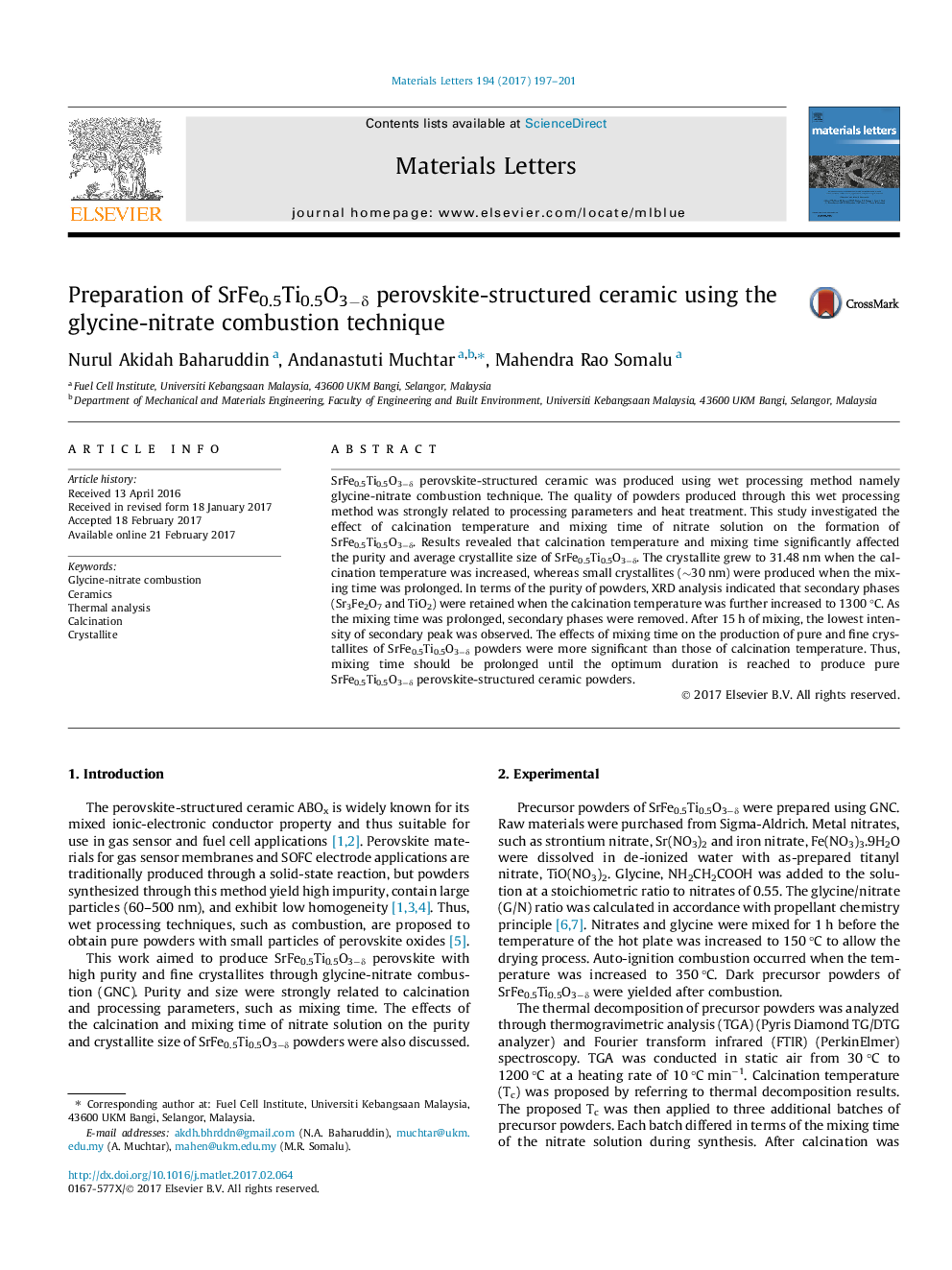| Article ID | Journal | Published Year | Pages | File Type |
|---|---|---|---|---|
| 5463345 | Materials Letters | 2017 | 5 Pages |
Abstract
SrFe0.5Ti0.5O3âδ perovskite-structured ceramic was produced using wet processing method namely glycine-nitrate combustion technique. The quality of powders produced through this wet processing method was strongly related to processing parameters and heat treatment. This study investigated the effect of calcination temperature and mixing time of nitrate solution on the formation of SrFe0.5Ti0.5O3âδ. Results revealed that calcination temperature and mixing time significantly affected the purity and average crystallite size of SrFe0.5Ti0.5O3âδ. The crystallite grew to 31.48 nm when the calcination temperature was increased, whereas small crystallites (â¼30 nm) were produced when the mixing time was prolonged. In terms of the purity of powders, XRD analysis indicated that secondary phases (Sr3Fe2O7 and TiO2) were retained when the calcination temperature was further increased to 1300 °C. As the mixing time was prolonged, secondary phases were removed. After 15 h of mixing, the lowest intensity of secondary peak was observed. The effects of mixing time on the production of pure and fine crystallites of SrFe0.5Ti0.5O3âδ powders were more significant than those of calcination temperature. Thus, mixing time should be prolonged until the optimum duration is reached to produce pure SrFe0.5Ti0.5O3âδ perovskite-structured ceramic powders.
Related Topics
Physical Sciences and Engineering
Materials Science
Nanotechnology
Authors
Nurul Akidah Baharuddin, Andanastuti Muchtar, Mahendra Rao Somalu,
